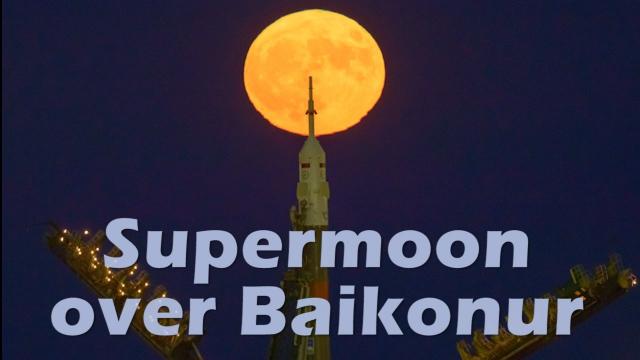Outer Space & Universe
Outer Space & Universe
Space, also known as outer space, is the near-vacuum between celestial bodies. It is where everything (all of the planets, stars, galaxies and other objects) is found.
On Earth, space begins at the Kármán line (100 km above sea level). This is where Earth's atmosphere is said to stop and outer space begins. This is not a firm boundary but is a convention used by scientists and diplomats.
Items in space are free to move back and forth; up and down; and left and right. These three dimensions are what make 3D space. Items also move forward through time, which is sometimes called the fourth dimension.
The majority of space contains very little matter and so most of it is a vacuum. Scientists do not know how big space is but we do know that space is extremely big, and is always expanding.
According to the big bang theory, all matter and energy in the Universe was compressed into a very small space. Then it exploded and started expanding. Space is still growing in size today; this means the distance from one galaxy to distant galaxies is getting longer.
Gravity is the force that keeps the Moon in orbit around the Earth and the planets in orbit around the Sun. Gravity can stretch and bend space similar to how a heavy ball placed on a stretched sheet of rubber will cause the rubber to stretch. The scientist who discovered that space can bend is named Albert Einstein. How gravity bends space is part of his theory of general relativity.
Astronauts, Cosmonauts, Taikonauts and Spationauts
An astronaut is any person who is trained by NASA to travel and perform tasks in space. Although the space traveler may not necessarily be a United States citizen, each astronaut does go through a rigorous training regiment by the National Aeronautics and Space Administration. Other space travelers go by other names then astronaut depending on their country of origin.
In the United States, astronaut is derived from the Greek words ástron (star) and nautis (sailor). While, in Russia, a space traveler goes by the name космонавт (English: cosmonaut), which is derived from the Greek words kosmos (universe) and nautis (sailor). Westerners call a space traveler from China a taikonaut, based on the 1998 writings of Chiew Lee Yik and Chen Lan where the term tàikōng (great emptiness), Chinese for “space”. In China, the term yuháng yuán (universe navigator) is used for space traveler.
Only the United States of America (United States), Russia (earlier, the Union of Soviet Socialist Republics), and the People’s Republic of China (China) have sent manned spacecraft into space. Other countries have assisted these countries by sending their own space travelers on space missions. For instance, a French space traveler is called a spationaut (from the French word spationaute), which is derived from the Latin spatium (space) and Greek nautis (sailor). (plural in Greek nautes = sailors)
-
01:13
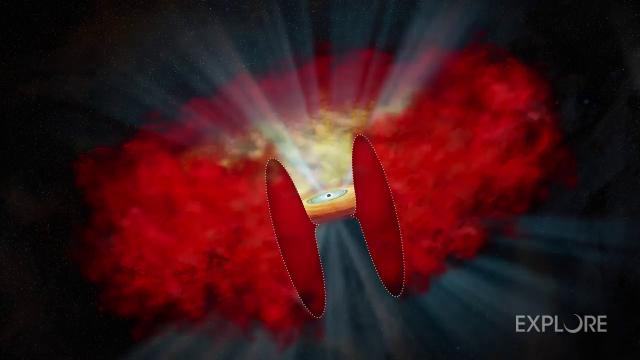
Supermassive black holes wrapped in 'thick cocoons' were misidentified
Added 401 Views / 0 LikesUsing NASA Chandra X-ray Observatory astronomers were able to correctly identify supermassive black holes in the Chandra Deep Field South (CDF-S). -- Chandra Space Telescope: Revealing the Invisible Universe: (https://www.space.com/18669-chandra-x-ray-obs
-
02:33
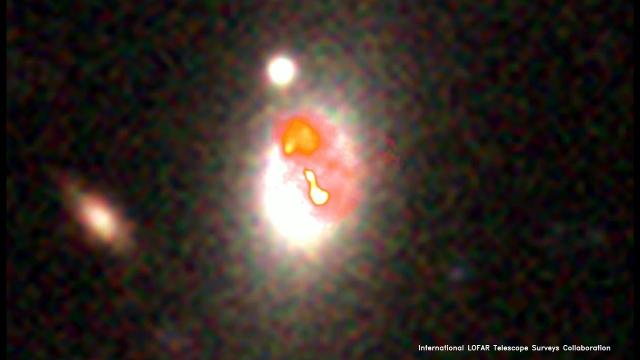
Supermassive black holes’ ‘radio light’ seen using Low Frequency Array
Added 291 Views / 0 LikesThe LOw Frequency ARray (LOFAR) has captured 'radio light' from several supermassive black holes in a single observation. LOFAR has antennas in several European countries that can be combined to scan the northern sky. Full Story: https://www.space.com/gal
-
02:01
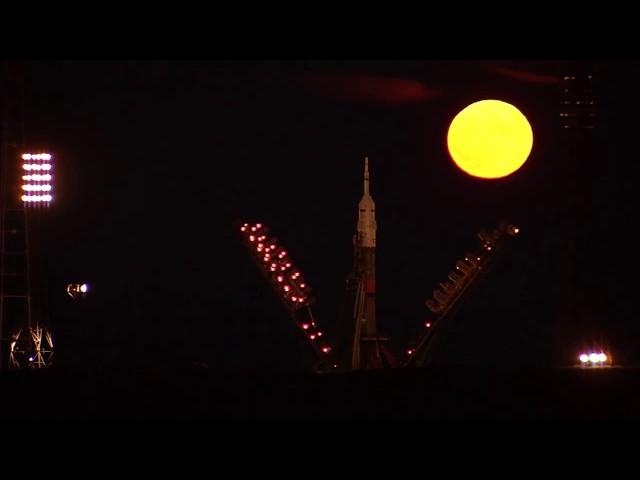
Supermoon and the Soyuz - Awesome Time-Lapse Captured At Baikonur Cosmodrome | Video
Added 694 Views / 0 LikesSupermoon and the Soyuz - Awesome Time-Lapse Captured At Baikonur Cosmodrome | Video
-
01:03
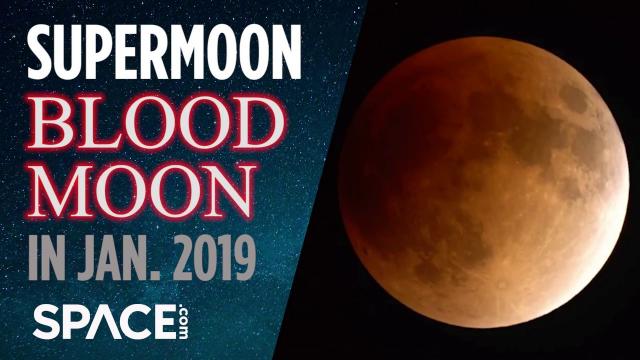
Supermoon Blood Moon in Jan. 2019 - When and Where to See It
Added 466 Views / 0 LikesOn the evening of Jan. 20-21, 2019, a large swath of Earth will experience a total lunar eclipse. It’s also a supermoon! Find out when and where you can see it. -- Supermoon Blood Moon Lunar Eclipse of 2019: Complete Guide:https://www.space.com/42830-supe
-
00:52
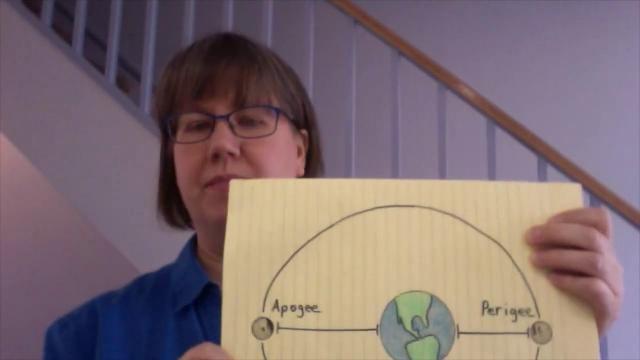
Supermoon explained by ‘NASA at Home’
Added 465 Views / 0 LikesNASA lunar scientist Sarah Noble explains what a supermoon in this teachable moment from the 'NASA at Home' series. 'Super Pink Moon' rises tonight! Teach your kids about the biggest full moon of 2020: https://www.space.com/super-pink-full-moon-2020-teach
-
01:03
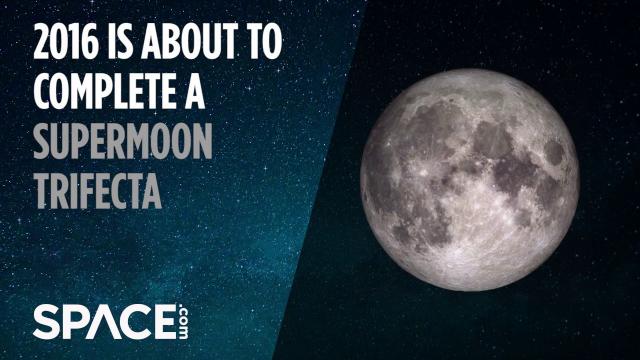
Supermoon In December 2016 Will Complete Trifecta | Video
Added 707 Views / 0 LikesSupermoon In December 2016 Will Complete Trifecta | Video
-
02:53
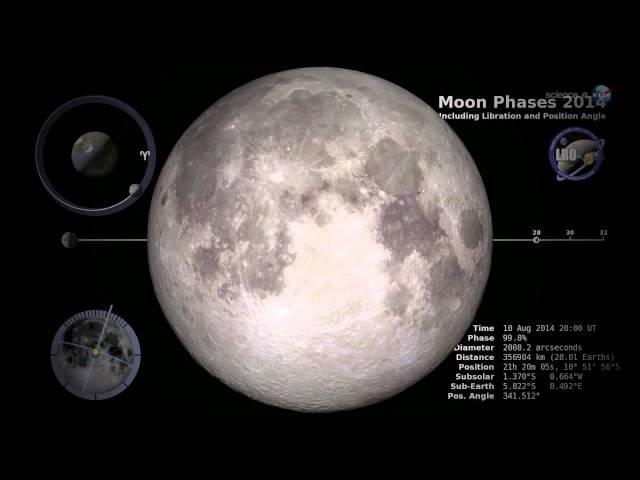
Supermoon vs. Perseids Meteors - Battle in August | Video
Added 715 Views / 0 LikesSupermoon vs. Perseids Meteors - Battle in August | Video
-
01:29
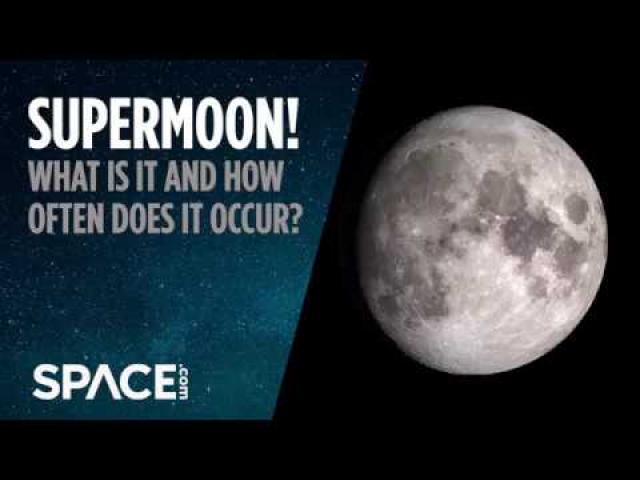
Supermoon! What is It and How Often Does It Occur?
Added 646 Views / 0 LikesSupermoon! What is It and How Often Does It Occur?
-
06:41

SuperMoonshine! Make Four Super-Eclipse-Harvest Moon Cocktails | Video
Added 708 Views / 0 LikesSuperMoonshine! Make Four Super-Eclipse-Harvest Moon Cocktails | Video
-
00:56
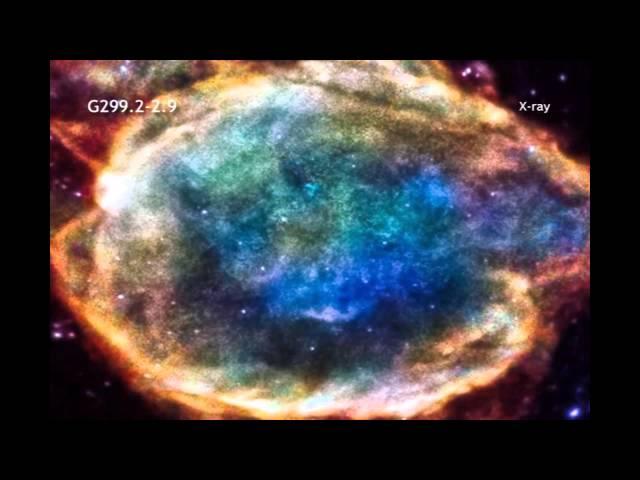
Supernova CSI - Colorized X-Ray Reveals Star-Killer’s Shap
Added 832 Views / 0 LikesSupernova CSI - Colorized X-Ray Reveals Star-Killer’s Shap
-
01:02
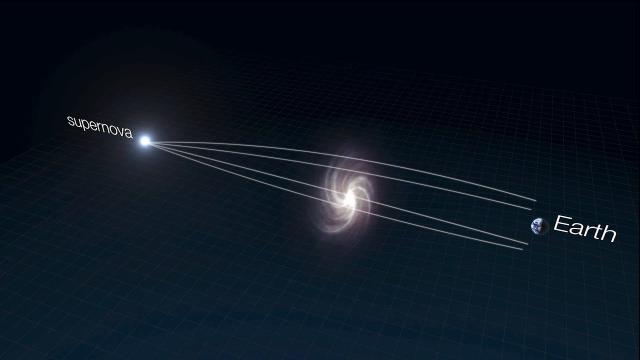
Supernova explosion 4 billion light-years away revealed using gravitational lensing
Added 168 Views / 0 LikesSupernova SN Zwicky "was magnified nearly 25 times by a foreground galaxy acting as a lens," according to the College of Computer, Mathematical, and Natural Sciences. Several telescopes were used to observe the supernova. Full Story: https://www.space.com
-
01:11
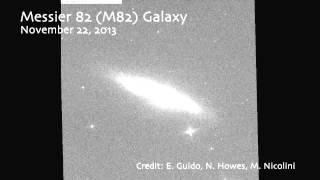
Supernova Explosion Seen In Nearby Galaxy | Video
Added 823 Views / 0 LikesThe light from an exploding star in the Messier 82 (M82) galaxy was first photographed from Earth on January 22nd, 2013. The galaxy is ~12 million light years away so the explosion occurred about 12 million years ago.
-
00:54
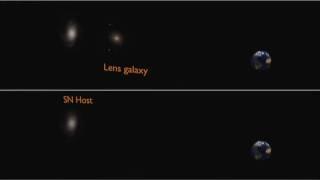
Supernova Magnified 30X By Gravitational Lens | Animation
Added 697 Views / 0 LikesAs Einstein predicted, Spacetime warps around massive objects (i.e. galaxies). Light from objects 'behind' them (e.g. Supernova PS1-10afx ) is bent and magnified to observers on Earth. Full Story: http://goo.gl/zbEnnK Credit: Anupreeta More/Kavli IPMU/ESA
-
01:01
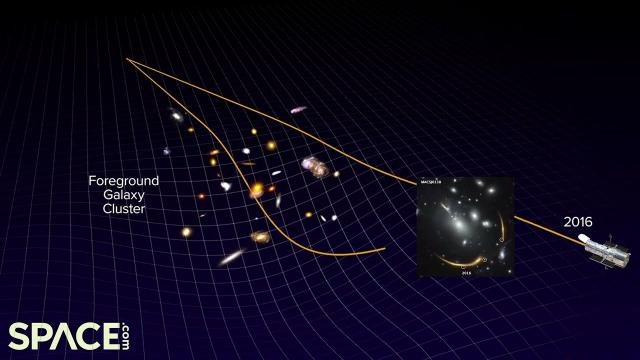
Supernova observation 'rerun' expected in 2037
Added 216 Views / 0 LikesHubble Space Telescope imagery of massive galaxy cluster MACS J0138, captured in 2016, revealed light from a distant supernova. Future telescopes may observe the same supernova in 2037 due to the cluster's mass bending the light.Credit: Space.com | Animat
-
02:41
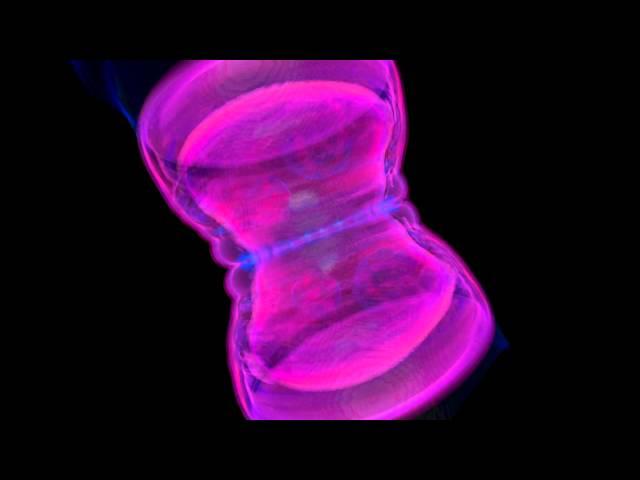
Supernova Remant 'Dissected' By Astronomy Research Center | Visualization
Added 710 Views / 0 LikesSupernova Remant 'Dissected' By Astronomy Research Center | Visualization
-
01:18
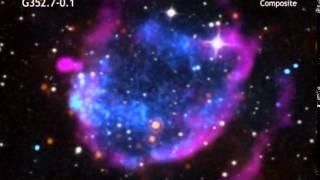
Supernova Shock Wave Blows-Away Huge Clumps of Cosmic Clutter | Video
Added 693 Views / 0 LikesA supernova remnant called G352.7-0.1 has swept away about 45X the Sun's mass worth of material during its expansion. Researchers believe that it interacted with a massive amount of dense material. -- X-Ray Universe Videos: http://goo.gl/zciTL
-
03:28
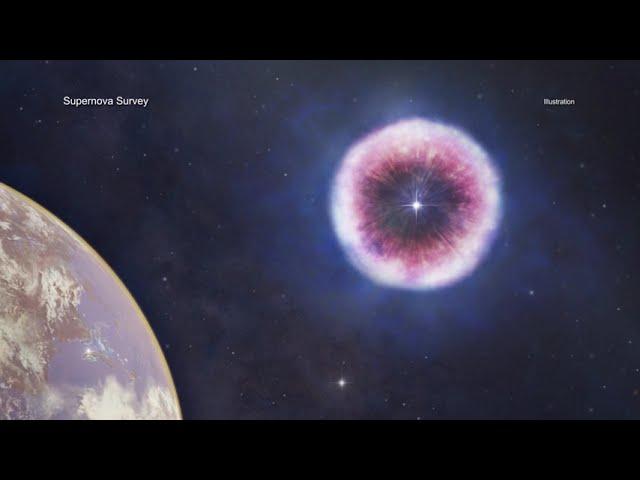
Supernova survey reveals new 'danger to planets'
Added 166 Views / 0 LikesA new study using the NASA’s Chandra X-ray Observatory and other X-ray telescopes has revealed that "an exploded star can pose more risks to nearby planets than previously thought." The Chandra team explains. Credit: NASA/CXC/A. Hobart
-
02:01
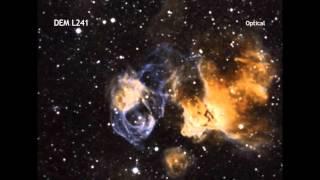
Supernova Survivor: Massive Star Weathers Mega-Blast | Video
Added 763 Views / 0 LikesA close look by NASA's Chandra X-ray Observatory at the debris field of supernova explosion DEM L241 in the Large Magellanic Cloud has revealed a young star tightly orbiting either a tiny neutron star or a black hole. Read more: http://goo.gl/xT14vA
-
01:12
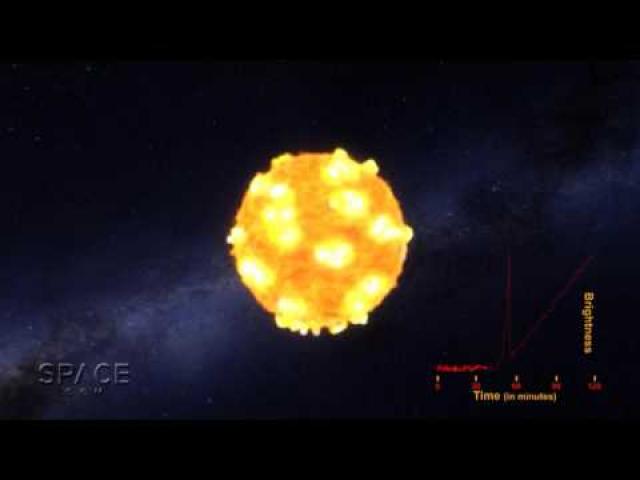
Supernova’s Super-Shockwave Seen For The First Time | Video
Added 609 Views / 0 LikesSupernova’s Super-Shockwave Seen For The First Time | Video

